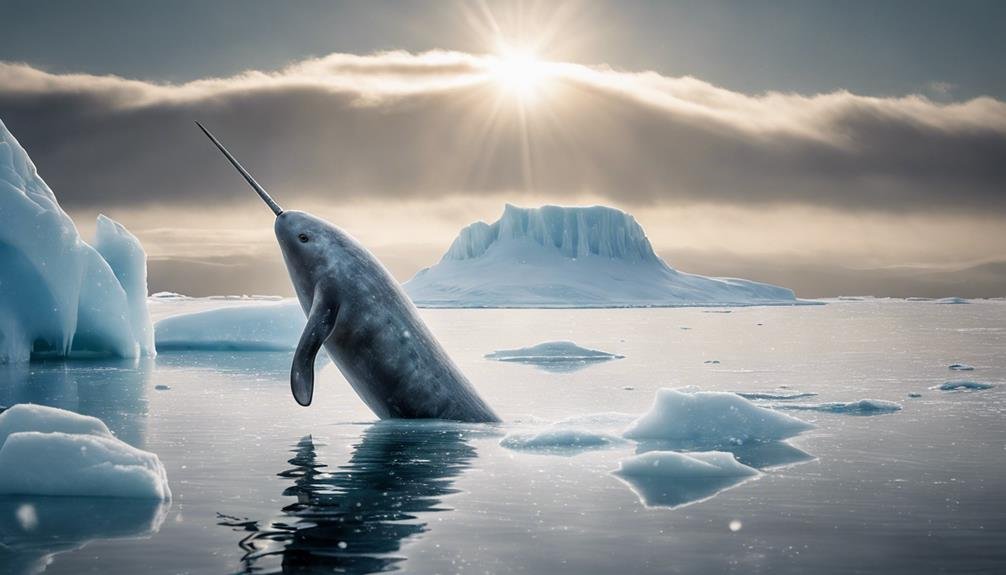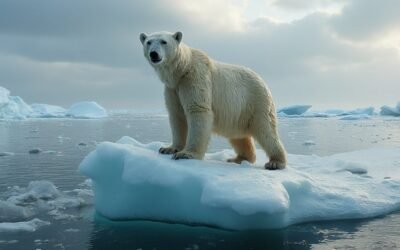Key Takeaways
Key Takeaways:- Distinctive Ivory Tusks: Narwhals are known for their unique ivory tusks that can grow up to 10 feet long, making them stand out in the Arctic ecosystem.
- Unique Feeding Techniques: These fascinating creatures use their tusks to stun prey, such as fish and squid, showcasing their innovative feeding strategies in the icy waters they inhabit.
- Complex Social Behaviors: Narwhals exhibit intricate social behaviors, living in pods and communicating through various vocalizations, enhancing their bond and survival in the challenging Arctic environment.
Unique Physical Features of Narwhals
Distinctive Spiral Tusks Narwhals are easily recognizable in the Arctic ecosystem due to their distinctive spiral tusks, which can grow up to an impressive length of 8.9 feet. These long, helical tusks are unique to narwhals and set them apart from other marine species in the Arctic waters. Specialized Suction Feeding One of the remarkable adaptations of narwhals is their specialized suction feeding technique. This allows them to efficiently feed on a diet consisting of Arctic fish, squid, shrimp, and various other marine species found in their habitat. The ability to suction feed is crucial for narwhals to thrive in the challenging Arctic environment. Unique Flippers for Navigation Unlike many marine mammals, narwhals lack dorsal fins. Instead, they’ve short flippers with upturned tips that aid them in navigating the icy Arctic waters with precision. These unique flippers help narwhals maneuver through the frozen environment and contribute to their overall agility in the sea. Evolved Physical Traits The combination of spiral tusks, lack of dorsal fins, and upturned flippers showcases how narwhals have evolved specific physical traits to survive and thrive in the harsh Arctic ecosystem. These adaptations highlight the incredible resilience and uniqueness of narwhals in their icy habitat.Narwhals’ Specialized Feeding Techniques
Narwhals’ Remarkable Feeding Strategies Unique Spiral Tusks: Narwhals possess distinctive spiral tusks that they use not only for display and communication but also for hunting. These tusks, which can reach lengths of up to 10 feet, play a crucial role in stunning prey before consumption. Specialized Suction Feeding: The narwhal’s specialized suction feeding technique sets it apart in the Arctic ecosystem. By creating a vacuum with their mouths, narwhals can efficiently capture and swallow their prey whole, optimizing their feeding efficiency. Diverse Prey Selection: Narwhals showcase specific feeding preferences by targeting a variety of prey, including Greenland halibut, Arctic cod, squid, and shrimp. This diverse diet ensures they obtain essential nutrients for their survival and reproductive success. Adaptability in Feeding Locations: Narwhals exhibit remarkable adaptability in their feeding habits by primarily targeting prey at the ice floe edge and in ice-free summer waters. This flexibility allows them to thrive in the ever-changing Arctic environment. Optimizing Nutrient Intake: Through their specialized feeding techniques, narwhals ensure they obtain the necessary nutrients to thrive in the challenging Arctic ecosystem. Their ability to swallow prey whole enhances their feeding efficiency and overall health.Narwhals’ Social Behavior in the Arctic
Narwhals’ Pod Structure
Narwhals, these fascinating marine creatures, form tight-knit pods in the Arctic waters. Within these pods, 2 to 10 individuals come together, displaying a unique segregation based on age and sex. This segregation plays a crucial role in the dynamics of the group, fostering social cohesion and communication among pod members.Synchronized Swimming and Vocalizations
One of the most captivating aspects of narwhals’ social behavior is their synchronized swimming and vocalizations. Through these synchronized movements and sounds, narwhals maintain group cohesion, aiding in tasks such as hunting and navigation in the Arctic environment. These behaviors showcase the intricate communication system within narwhal pods.Group Dynamics for Survival
The group dynamics within narwhal pods are essential for their survival in the harsh Arctic ecosystem. By working together, pod members can effectively locate food sources and protect against predators. Their collective efforts in navigating the icy waters demonstrate the importance of social bonds in ensuring the well-being of the entire pod.Insights into Arctic Adaptations
Studying the social behavior of narwhals provides valuable insights into their strategies for thriving in the challenging Arctic environment. By understanding how they interact within their pods, researchers can gain a deeper understanding of their adaptations and survival techniques in this extreme habitat. This knowledge is key to conservation efforts and protecting these unique marine mammals for future generations.Survival Strategies of Narwhals
Surviving in the Harsh Arctic Environment Deep Diving Abilities of Narwhals Navigating Treacherous Waters Utilizing Sonar Abilities for NavigationImpact of Climate Change on Narwhals

Frequently Asked Questions
What Makes Narwhals Unique?
Question: What is the function of a narwhal’s tusk? Answer: The narwhal’s tusk serves for hunting and communication purposes.What Are Some Facts About Narwhals in the Arctic?
What is the significance of narwhal tusks in the Arctic? Narwhal tusks in the Arctic serve as tools for communication and breaking through ice barriers.How Have Narwhals Adapted to the Arctic?
Q: How do narwhals stay warm in the Arctic? A: Narwhals stay warm in the Arctic thanks to their blubber insulation.Why Are Narwhals Important to the Ecosystem?
What role do narwhals play in the Arctic ecosystem? Narwhals are essential top predators in the Arctic ecosystem, influencing population dynamics and ecosystem health through their feeding habits and interactions. Their sensitivity to changes and reliance on sea ice make them crucial indicators of the overall health of the ecosystem.How Do Narwhal Adaptations Contribute to Their Role in the Arctic Ecosystem?
Narwhal adaptations in the arctic allow these unique whales to thrive in harsh conditions. Their tusks help in sensing environmental changes under ice, while their ability to navigate freezing waters supports their survival. These adaptations position narwhals as key predators, controlling fish populations and maintaining balance in the marine ecosystem.


